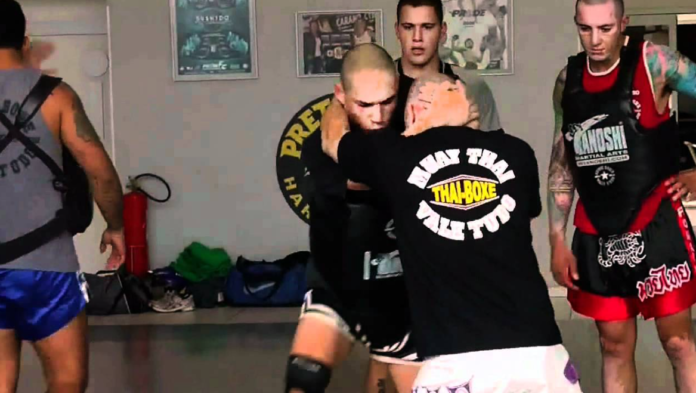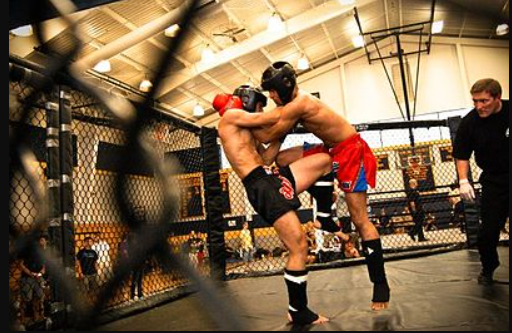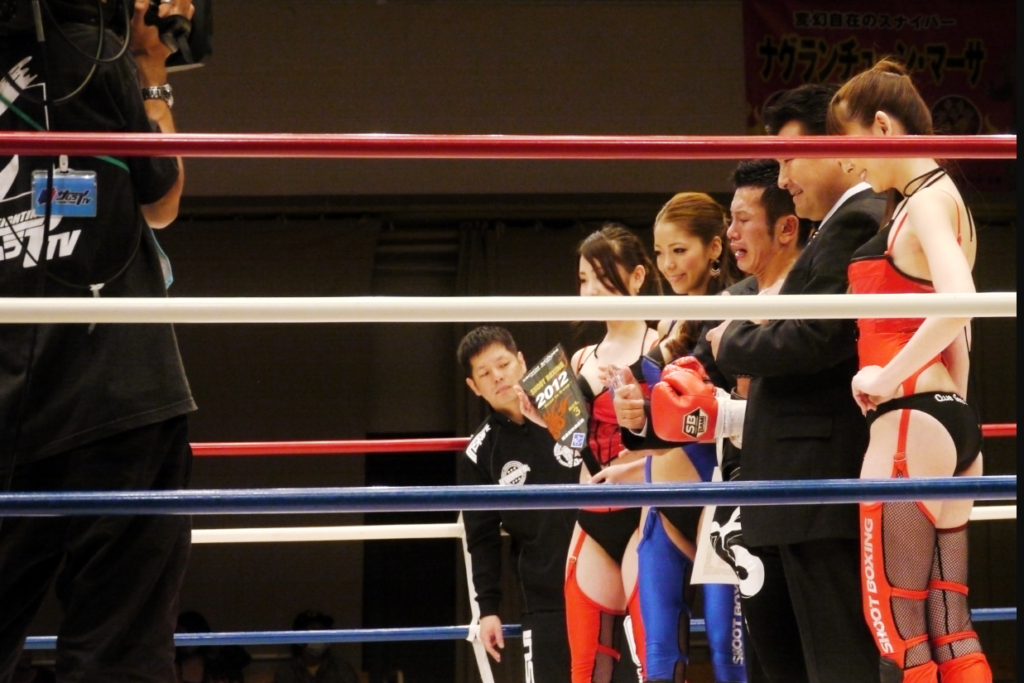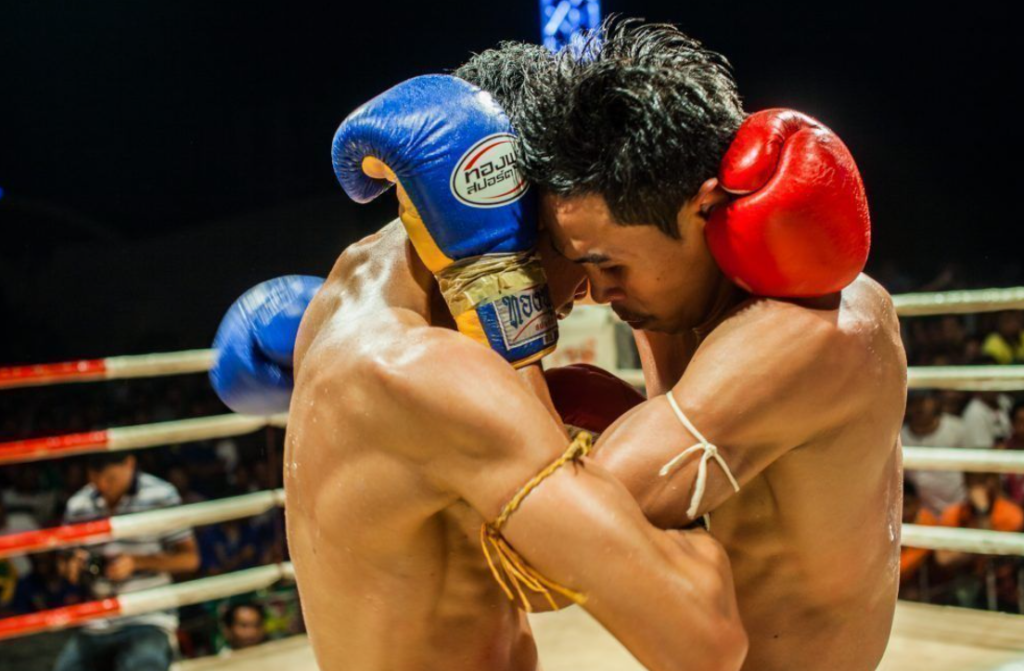
Shoot boxing is a hybrid martial art combining kickboxing, Muay Thai, and wrestling elements. It was first introduced in Japan in the late 1980s and has since spread to various countries around the world. In this article, we will look at the history of shoot boxing, its rules, weight classes, scoring system, matches, and championships. We will also take a closer look at the legendary Chute Boxe Academy in Curitiba, Brazil, and how it impacted the development of other combat sports like MMA and Vale Tudo.
What Is Shoot Boxing
Shoot boxing is a hybrid combat sport that originated in Japan in the early 1980s. It combines elements of kickboxing, Muay Thai, and grappling, with an emphasis on striking and throwing techniques. Unlike traditional kickboxing, shoot allows fighters to throw their opponents to the mat and follow up with ground-and-pound techniques.
The rules of shoot boxing are similar to those of kickboxing, with fighters wearing gloves and competing in a ring. However, in shoot, fighters are allowed to clinch and throw their opponents to the mat. Once a fighter has thrown their opponent, they can follow up with punches, kicks, or knee strikes. That said, fighters are not allowed to continue striking their opponent once they are on the ground.
Another unique aspect of shoot boxing is the use of standing submissions. This means that fighters can attempt submission holds, such as arm bars and chokes, while their opponent is still standing. If the fighter successfully executes a standing submission, the opponent must submit or be thrown to the mat.
One of the most well-known promotions is the Shoot Boxing World Tournament, which features top fighters from around the world competing for a cash prize. The tournament is held annually and attracts a large following of combat sports fans.
History Of Shoot Boxe
Where did shoot boxing come from, and how has it evolved over time?
Shoot boxing was created in Japan in the early 1980s by a professional wrestler named Satoru Sayama, who was also the founder of the shoot-style wrestling organization, Universal Wrestling Federation (UWF). Sayama wanted to create a new combat sport that would incorporate elements of grappling and striking, while also emphasizing the importance of technique and strategy.
The first shoot boxing event was held in 1985, and it quickly gained popularity in Japan. In the early years, the sport was seen as an extension of kickboxing, with many of the same rules and regulations. It quickly developed its own unique style, with an emphasis on throwing and submission techniques.
In the early 1990s, shoot boxing began to attract top fighters from around the world. One of the most well-known fighters in the early days of shoot boxe was Andy Hug, a Swiss kickboxer who won the Shoot Boxing World Tournament in 1993. Hug’s success helped to raise the profile of the sport and attract more international fighters.
Over the years, this combat sport has continued to evolve, with new techniques and strategies being developed by fighters and coaches. In 2003, shoot boxing introduced a new rule that allowed fighters to attempt submissions while standing, adding an extra layer of strategy and excitement to the sport.
Today, shoot boxing is a popular combat sport in Japan and is gaining a following in other parts of the world. One of the most well-known promotions is the Shoot Boxing World Tournament, which features top fighters from around the world competing for a cash prize.
What Are The Shoot Boxing Rules?
Shoot boxing is similar to kickboxing in that fighters wear gloves and compete in a ring. Still, there are some key differences that give shoot its originality. Fighters are allowed, and even tactically encouraged, to clinch and throw their opponents to the mat. Once a fighter has thrown their opponent, they can follow up with punches, kicks, or knee strikes. However, fighters are not allowed to continue striking their opponent once they are on the ground.
Weight Classes
Like most combat sports, shoot boxing has weight classes to ensure that fighters are competing against opponents of a similar size and weight. There are currently six weight classes:
- Flyweight: Up to 53 kg
- Featherweight: 53.1 to 56 kg
- Lightweight: 56.1 to 60 kg
- Welterweight: 60.1 to 65 kg
- Middleweight: 65.1 to 70 kg
- Heavyweight: Over 70 kg
Scoring System
The scoring system in shoot boxing is similar to that of kickboxing. Fighters score points by landing strikes on their opponent, including punches, kicks, and knee strikes.
The number of points awarded depends on the type of strike and the effectiveness of the strike. For example, a clean punch to the face will score more points than a glancing kick to the leg.
In addition to strikes, fighters can also score points by throwing their opponent to the mat and following up with strikes. However, as mentioned earlier, fighters are not allowed to continue striking their opponent once they are on the ground.
Submissions are also an option for victory but are only allowed while both fighters are standing.
Shoot Boxing Matches
Shoot boxing matches consist of three rounds, with each round lasting three minutes. Fighters are allowed one minute of rest between rounds. If a fighter is knocked down, the referee will begin a standing eight-count. If the fighter is unable to continue after the count, the match is over.
Championships
One of the most prestigious championship is the Shoot Boxing World Tournament. This annual event features top fighters from around the world competing for a cash prize. The tournament consists of a series of elimination matches, with the winners advancing to the next round. The final match is a five-round fight, with the winner being crowned the Shoot Boxing World Champion.
Some other notable championships include:
- Japan Super Championship
- RISE World Series
- Road to Glory Japan
What Is The Chute Boxe Academy?
The Chute Boxe Academy is a legendary Brazilian mixed martial arts team known for producing some of the most fearsome fighters in MMA history. It was based out of Curitiba, Brazil, under the guidance of Rudimar and Rafael Fedrigo.
The Legendary Chute Boxe Team
The Chute Boxe Academy was founded in 1978 by brothers Rudimar and Rafael Fedrigo in Curitiba, Brazil. The gym quickly gained a reputation for producing some of the best strikers in the world, with Chute Boxe fighters like Wanderlei Silva, Mauricio “Shogun” Rua, and Anderson Silva becoming household names in the MMA world.
The Academy was known for its aggressive fighting style, with an emphasis on Muay Thai and boxing techniques. Fighters from Chute Boxe were known for their devastating knee strikes, which often ended fights in spectacular fashion.
There is still the aura of mystery regarding the team’s notoriously difficult sparring sessions, which multiple team members that turned into UFC champions described as being a lot more difficult (and dangerous) than the actual fights.
The Chute Boxe Academy vs Brazilian Top Team Rivalry
One of the most famous rivalries in Brazilian MMA history was between the Chute Boxe Academy and the Brazilian Top Team (BTT). The two teams had a heated rivalry that lasted for years, with both sides producing some of the best fighters in the sport.
The rivalry between Chute Boxe and BTT reached its peak in 2003 when Wanderlei Silva, a Chute Boxe fighter, faced off against Ricardo Arona, a BTT fighter, in the finals of the Pride Middleweight Grand Prix. The fight was a classic, with Silva ultimately winning by knockout in the third round.
Downfall Of The Chute Boxe Academy
Despite its success in the early years of MMA, the Chute Boxe Academy began to decline in the late 2000s. Many of its top fighters either retired or left the gym for other teams, and the gym struggled to produce new talent.
The downfall of the Chute Boxe Academy can be attributed to a number of factors, including changes in the sport of MMA and increased competition from other gyms. However, the legacy of the Chute Boxe Academy lives on, with many of its fighters considered legends of the sport.
Is Shoot Boxing Effective For Self-Defense?
Shoot boxing has gained popularity among martial arts enthusiasts for its fast-paced and intense fighting style. But can it be effective for self-defense if you’re not at the same level as the bests from the Chute Boxe Academy? Let’s take a careful look at the advantages and disadvantages of using shoot for self-defense.
Advantages of Shoot Boxing for Self-Defense
- Striking Techniques: Shoot boxing is known for its striking techniques, which include punches, kicks, and knee strikes. These techniques can be highly effective in defending oneself against an attacker.
- Clinch Work: Shoot also incorporates clinch work, which involves close-range fighting and grappling. This can be useful in situations where an attacker is in close proximity.
- Fitness: Training in shootboxing can improve your overall fitness level, which can increase your chances of successfully defending yourself in a physical confrontation.
Disadvantages of Shoot Boxing for Self-Defense
- Ruleset: Shoot boxing has specific rules and limitations that may not apply in a real-life self-defense situation. For example, certain strikes, such as headbutts and groin strikes, are not allowed in shoot.
- Ground Fighting: Shoot boxing does not emphasize ground fighting, which can be a disadvantage in self-defense situations where the attacker takes the fight to the ground.
- Multiple Attackers: Self-defense situations often involve multiple attackers, which can make it difficult to apply shoot techniques effectively.
Shoot Boxing vs. MMA
Shoot boxing MMA are two combat sports that share many similarities but also have distinct differences.
The rules of shoot boxing and MMA are quite different.
The effectiveness of shoot boxe and MMA as combat sports is a topic of debate among martial arts enthusiasts.
- MMA is often considered to be more effective in a real-life self-defense situation due to its inclusion of grappling and ground fighting techniques.
- Shoot boxing, on the other hand, is seen as more focused on striking and may be less effective in close-quarters combat.
- it’s important to note that both sports require a high level of skill and physical conditioning to be effective in combat. The best approach to self-defense is to train in a variety of martial arts and combat sports, including shoot boxing and MMA, to develop a well-rounded skill set.
What Is The Difference Between Shootboxing And Vale Tudo?
Shoot boxing and Vale Tudo are combat sports with distinct differences in rules, techniques, and overall approach to fighting.
Rules of shoot boxing and Vale Tudo differ significantly.
- Shoot boxing is a hybrid combat sport that combines elements of kickboxing, Muay Thai, and grappling, but does not allow ground fighting or submissions.
- Vale Tudo, on the other hand, is a combat sport that allows for striking, grappling, and submissions, with few rules and limited protective gear.
The approach to fighting in shoot boxing and Vale Tudo is also quite different.
- Shoot boxing is a fast-paced and intense combat sport that emphasizes striking and clinching techniques. It requires a high level of athleticism, speed, and precision.
- Vale Tudo, on the other hand, is a more brutal and aggressive combat sport that emphasizes both striking and grappling techniques. It requires a high level of physical strength, endurance, and technical skill.
Conclusion
Shoot Boxing is a unique and very dynamic combat sport that combines striking and grappling techniques to create a fast-paced and exciting experience for both fighters and spectators. It has a rich history and continues to evolve as a sport with its own set of rules, weight classes, scoring system, matches, and championships.


![Darce Choke Encyclopedia – Origins, Mechanics and Variations [2025] BJJ, choke, Brabo, BJJ Darce Choke, D'arce Choke, Darce BJJ Choke](https://bjj-world.com/wp-content/uploads/2017/11/JungPoirierLeeYahoo-218x150.jpg)













![Jiu-Jitsu For Old Guys Guard Retention Bernardo Faria DVD Review [2025] Jiu-Jitsu For Old Guys Guard Retention Bernardo Faria DVD Review](https://bjj-world.com/wp-content/uploads/2025/03/old-guys-guard-retention-bernardo-faria-dvd-review-218x150.png)
![X-Guard Trickery Kyle Sleeman DVD Review [2025] X-Guard Trickery Kyle Sleeman DVD Review](https://bjj-world.com/wp-content/uploads/2025/03/x-guard-trickery-kyle-sleeman-dvd-review-218x150.png)
![Countering with Crab Ride Anthony Budion DVD Review [2025] Countering with Crab Ride Anthony Budion DVD Review](https://bjj-world.com/wp-content/uploads/2025/03/countering-with-crab-ride-anthony-budion-dvd-review-218x150.png)
![Closet Closed Guard Craig Jones DVD Review [2025] Closet Closed Guard Craig Jones DVD Review](https://bjj-world.com/wp-content/uploads/2025/03/closet-closed-guard-craig-jones-dvd-review-218x150.png)
![Xanadu Back Takes Levi Jones-Leary DVD Review [2025] Xanadu Back Takes Levi Jones-Leary DVD Review](https://bjj-world.com/wp-content/uploads/2025/03/xanadu-back-takes-levi-jones-leary-dvd-review-218x150.png)

![Master Scissor Sweep Ryan Scialoia DVD Review [2025] Master Scissor Sweep Ryan Scialoia DVD Review](https://bjj-world.com/wp-content/uploads/2024/12/scissor-sweep-ryan-scialoia-dvd-review-324x235.png)
![Trip Throw Dilemma Michael Pixley and Heath Pedigo DVD Review [2024] Trip Throw Dilemma Michael Pixley and Heath Pedigo DVD Review](https://bjj-world.com/wp-content/uploads/2024/10/trip-throw-dilemma-michael-pixley-dvd-review-100x70.png)


![A Blueprint For Smeshing Khabib Nurmagomedov DVD Review [2024] A Blueprint For Smeshing Khabib Nurmagomedov DVD Review](https://bjj-world.com/wp-content/uploads/2024/10/blueprint-for-smeshing-khabib-nurmagomedov-dvd-review-100x70.png)

![Darragh O’Conaill Crucifix Encyclopedia DVD Review [2024] Darragh O'Conaill Crucifix Encyclopedia DVD Review](https://bjj-world.com/wp-content/uploads/2024/10/darragh-oconaill-crucifix-encyclopedia-dvd-review-100x70.png)
![Crush The Guard Vagner Rocha DVD Review [2024] Crush The Guard Vagner Rocha DVD Review](https://bjj-world.com/wp-content/uploads/2024/10/crush-the-guard-vagner-rocha-dvd-review-100x70.png)

![Reverse Armlock Magid Hage DVD Review [2024] Reverse Armlock Magid Hage DVD Review](https://bjj-world.com/wp-content/uploads/2024/12/reverse-armlock-magid-hage-dvd-review-100x70.png)


![BJJ Foundations Mikey Musumeci DVD Bundle Review [2024] BJJ Foundations Mikey Musumeci DVD Bundle Review](https://bjj-world.com/wp-content/uploads/2024/09/bjj-foundations-mikey-musumeci-dvd-bundle-review-100x70.png)
![Standing Leg Entries Alex West DVD Review [2025] Standing Leg Entries Alex West DVD Review](https://bjj-world.com/wp-content/uploads/2025/03/standing-leg-entries-alex-west-dvd-review-100x70.png)
![Slip N Slide Into Victory Julián Espinosa DVD Review [2025] Slip N Slide Into Victory Julián Espinosa DVD Review](https://bjj-world.com/wp-content/uploads/2025/01/slip-n-slide-into-victory-julian-espinosa-dvd-review-100x70.png)
![Upper Body Chain Attacks Janine Mocaiber DVD Review [2025] Upper Body Chain Attacks Janine Mocaiber DVD Review](https://bjj-world.com/wp-content/uploads/2025/03/upper-body-chain-attacks-janine-mocaiber-dvd-review-100x70.png)




![Old School BJJ Ricardo Cavalcanti Fundamentals DVD Review [2024] Old School BJJ Ricardo Cavalcanti Fundamentals DVD Review](https://bjj-world.com/wp-content/uploads/2024/09/old-school-bjj-ricardo-cavalcanti-dvd-preview-100x70.png)
![Leg Lock Strategies: Navigating Entanglements Jack Stapleton DVD Review [2024] Leg Lock Strategies: Navigating Entanglements Jack Stapleton DVD Review](https://bjj-world.com/wp-content/uploads/2024/12/navigating-entanglements-jack-stapleton-dvd-review-100x70.png)

![The Buchecha Gi Takedown System DVD Review [2025] The Buchecha Gi Takedown System DVD Review](https://bjj-world.com/wp-content/uploads/2025/01/buchecha-gi-takedown-system-dvd-review-100x70.png)
![Assassin Choke Baret Yoshida DVD Review [2024] Assassin Choke Baret Yoshida DVD Review](https://bjj-world.com/wp-content/uploads/2024/10/assassin-choke-baret-yoshida-dvd-review-100x70.png)

![Roger Gracie Closed Guard System DVD Review [2025] Roger Gracie Closed Guard System DVD Review](https://bjj-world.com/wp-content/uploads/2025/01/roger-gracie-closed-guard-system-dvd-review-100x70.png)

